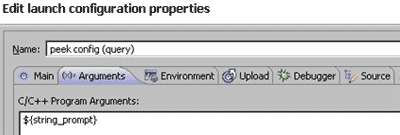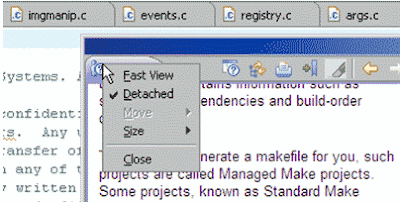A sneak peak at an upcoming Eclipse webinar
I’m totally addicted to PhotoShop. But, like every other PhotoShop user, I’ve resigned myself to the fact that I’ll never really master the program. It simply has too many tools, any of which can be used in a thousand different ways.
Eclipse CDT is a lot like that. It’s so feature rich that you can take years to become a true power user.
My colleague
Andy Gryc, who has helped customers with their Eclipse issues, has seen this problem first hand. And it gave him an idea: What if he canvassed a number of advanced Eclipse users and collected their favorite productivity tips?
Well, he did just that, and the result is a new webinar called “
Hot Tips and Tricks for the Eclipse IDE.” I just got an early look at the content, and it’s shaping up to be a great session for anyone who wants to squeeze the most out of their Eclipse-based toolset.
Andy plans to cover automatic code formatting, code folding, advanced search, automatic refactoring, call hierarchy navigation, plug-ins, keyboard shortcuts, custom breakpoint actions, and many other techniques for boosting productivity — more than two dozen topics in all.
Sample techniquesTo give you a taste, here are a few techniques that Andy will cover. Keep in mind that I've chosen some of the simpler examples — the webinar will also explore more advanced topics.
Viewing definitions and prototypes If you press <Ctrl> and hover your pointer over an identifier, it transforms into a hyperlink. Simply click the link to view the identifier’s definition or prototype:
 Prompting for command-line arguments
Prompting for command-line argumentsTo prompt for command-line arguments when launching an executable, go to the program’s Launch Configuration, click the C/C++ Program Arguments tab, and insert the
${string_prompt} literal:
 Detaching views
Detaching viewsIf you use multiple monitors, detaching a view from the main window can come in really handy. Simply right-click on the header and select Detach:

Again, this is just a sample — Andy will also cover template proposals, variable directory paths, automated header file include, function completion, automatic structure completion, expansion of #define’s, version compare, and many other techniques.
The webinar occurs Thursday, December 10, 2009 at 12:00 noon EST. For more information or to register,
click here.
Remember, though, to fire up your Eclipse environment before entering the webinar. That way, you can try out the techniques in real time.
 Yesterday, I was regaling my colleagues with an urban legend about Hershey's kisses. It goes something like this: Decades ago, factory workers wrapped the kisses by hand. To speed up the process, some workers would lick the bottom of each kiss before placing it on the wrapping paper — this practice ensured that the kiss stayed in place while being wrapped.
Yesterday, I was regaling my colleagues with an urban legend about Hershey's kisses. It goes something like this: Decades ago, factory workers wrapped the kisses by hand. To speed up the process, some workers would lick the bottom of each kiss before placing it on the wrapping paper — this practice ensured that the kiss stayed in place while being wrapped. 










